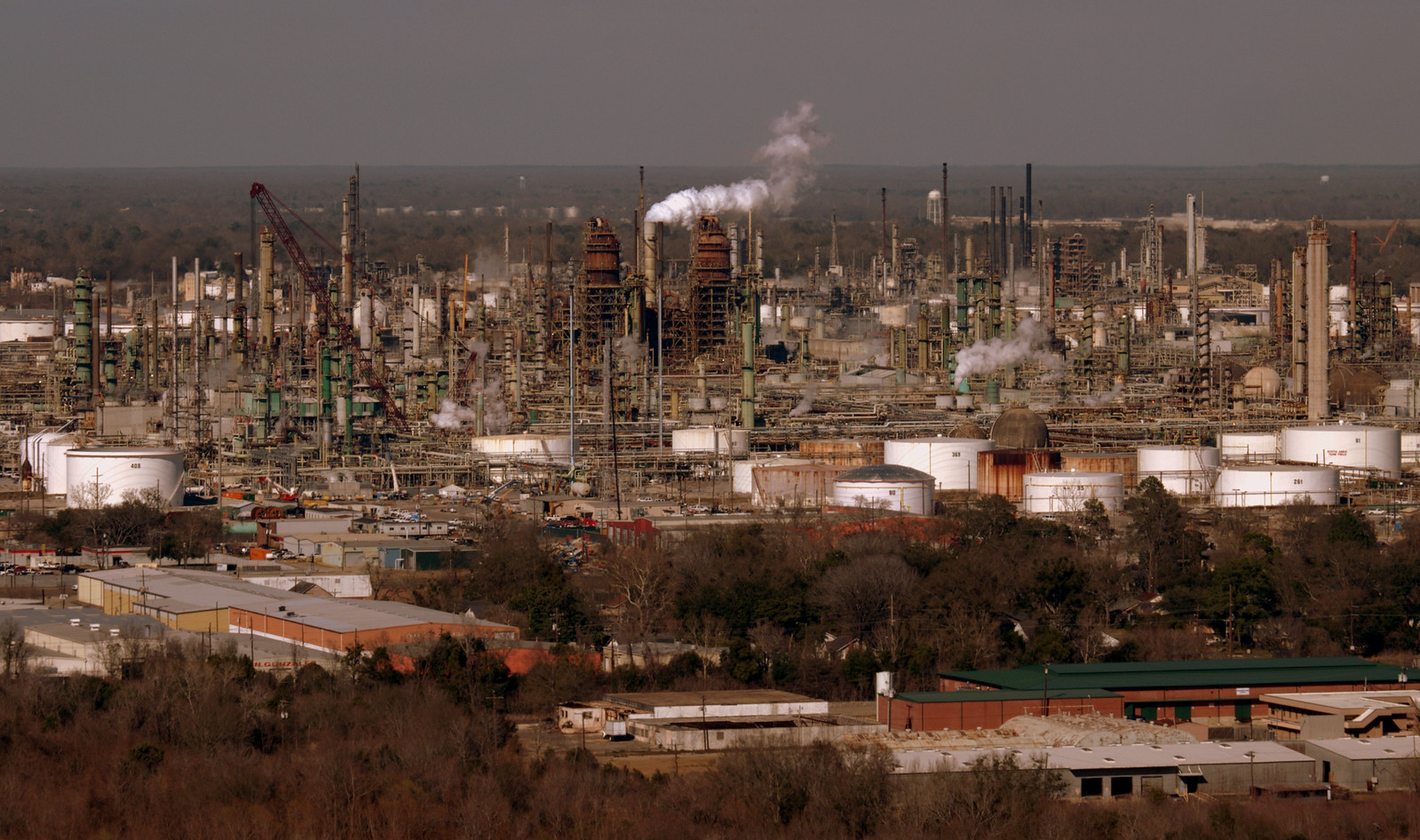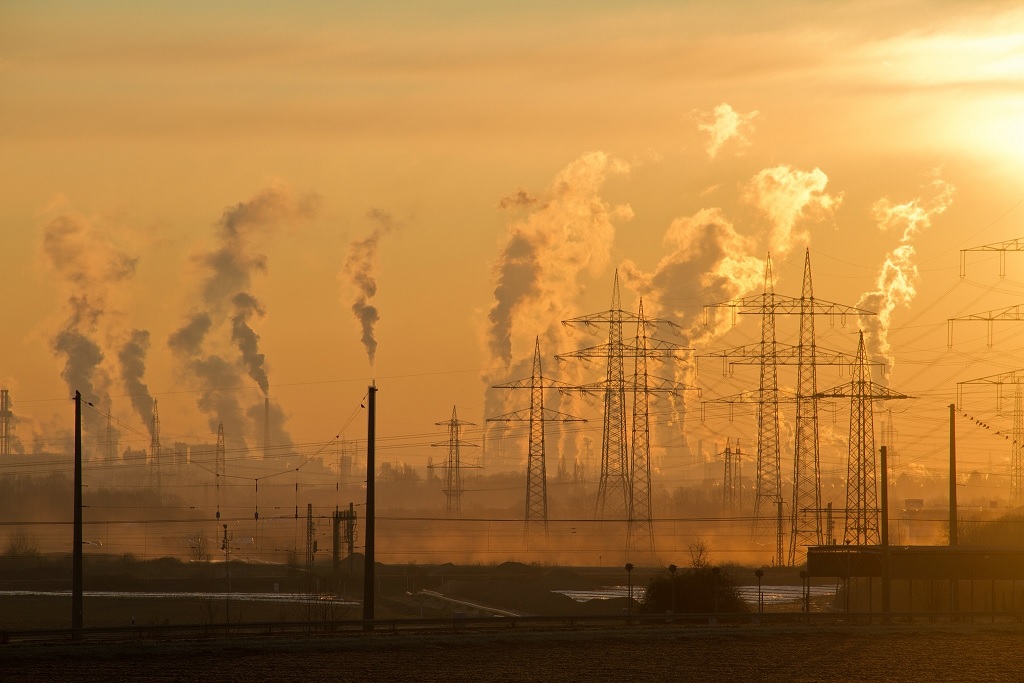The mining, refining and manufacturing demanded by industrial civilization – even “green” renewables – means pollution, cancer alleys, and sacrifice zones.
How many sacrifice zones does it take to save the planet?
Phrase it like that, and it sounds absurd, doesn’t it? And yet, that’s the quiet question hiding behind the assumption that we can save the world by switching to “renewable” energy, or even maintain a culture and economy based upon industry at all.
Sacrifice zones are usually considered to be the populated areas adjacent, near, downwind, or downstream from toxic, polluting industrial facilities. They’re usually found in places where land is cheap and regulations are lax, which, not coincidentally, are also places where poor, disadvantaged, and disproportionately Black people can afford to live. (Sometimes, rather directly.) These communities, which serve as dumping grounds and buffers between polluting industries and the people who rather prefer to keep those facilities out of view and far enough away to not harm them directly, but who aren’t willing to stop using the products or enjoying the benefits of an industrial economy.
In short, people who live in sacrifice zones are quite literally sacrificed – their health, safety and wellbeing put in danger – so other people can live better, more healthy lives.
The classic example is an 85-mile swath of Louisiana along the shore of the Mississippi River between Baton Rouge and New Orleans, lined with petrochemical plants, so polluted that it’s informally known as “Cancer Alley” as a nod to the real-world effect of living in a toxic stew. Typically, residents of sacrifice zones like Cancer Alley lack the income, social and political capital to do much about their situation. Recently, however, people living in the area started to fight back, launching waves of litigation against those responsible for discriminatory siting practices or approving expansion requests made by toxic industries centered in majority Black districts while rejecting similar land use plans in majority white districts.

However, Cancer Alley far from the only hot spot where disadvantaged people serve as sponges to soak up contamination before it escapes to “better” neighborhoods. In 2021, ProPublica identified over a thousand places in the United States where air pollution was so prevalent and from so many sources that the cumulative lifetime cancer risk was far in excess of levels that the EPA deems acceptable. Of the top 20 areas on ProPublica’s list, a quarter were in Texas. Most of the sacrifice zones are located in Southern states, where relevant protections are weak. On average, majority Black census tracts experience 40% more carcinogenic air pollution and have more than double the lifetime cancer risk than census tracts with a majority of white residents, a pattern persistent across income levels.
These risks get in the way of people who simply want to live their lives. High cancer and asthma rates affect their lifespan and quality of life directly. Air, water, and soil contaminants limit what can be done in those areas, whether it makes water unsafe to drink, you can’t eat the fish, you can’t plant a garden or play outside. Due to an increased cancer risk for children in St. John the Baptist Parish, Louisiana, the EPA suggested that the local school board relocate an entire elementary school. But where? The Louisiana Department of Health determined that moving the Fifth Ward Elementary to another location in the community wouldn’t significantly lower their lifetime cancer risk. Is it all poisonous, through and through?
While the petrochemical industry is a gross offender, poisoning air, land and water while turning forests into environmental sacrifice zones, moving toward “renewables” doesn’t improve the situation. After all, industry is industry.
Electric vehicles, solar panels, wind turbines, and the upgraded grid that it would take to move all those “clean” electrons around, all use resources that need to be mined, refined, transported, and installed, and it’s usually done with an eye toward maintaining the industrial status quo rather than dialing back consumption in any significant way. If we can speak of neighborhoods and people sacrificed to industry, it’s fair to consider land made uninhabitable through pollution and catastrophic changes such as mining to be sacrifice zones as well.
Indonesia is rich in low-grade laterite nickel ore, and being able to refine and export it would bring revenue even as it helps support the renewable energy sector, since nickel is needed to make batteries for electric vehicles. A refinery that turns this low-grade ore into an ingredient for batteries through an acid-leaching process (once considered too risky) was built on Obira Island, Indonesia, one of the first of its kind.
One problem, though: what to do with four million metric tons of toxic waste produced by this process every year? They could pump it straight into the sea, a plan that met with significant public backlash. Or they could store it on land, like other facilities where runoff turns local rivers funny colors and then the locals can’t drink the water anymore. Heavy rain and frequent earthquakes make tailings ponds prone to leakage and overflow.
Closer to home, construction began on a lithium mine at Thacker Pass, an environmentally sensitive area which is also considered sacred by local Indigenous groups. Like nickel, lithium is a critical component for batteries used in electric cars. Environmental permitting for the Thacker Pass site took far less time than one would expect, implying that it’s being rushed through the process in the name of a “green transition.” It’s not looking very green to the Native American tribes, cattle rancher, and environmental advocates who joined forces as plaintiffs in a case against Lithium Nevada and the Bureau of Land Management to stop the mine. Building a homegrown EV supply chain may be too important to the Biden administration (and well-off people in cities who feel virtuous driving electric cars) to actually save Thacker Pass, though.
Throughout the United States and around the world, marginalized communities are being placed in harm’s way to satisfy the industrial desires of the world’s better-off. Whether it’s majority Black counties in California dealing with flooded toxic sites, Canada’s more nothern Indigenous people who can no longer safely consume their traditional diets due to PFAS “forever chemical” contamination, or toxic tailings from China’s largest Rare Earth Elements (REE) mine contaminating groundwater as it moves toward the Yellow River, industrial culture is creating sacrifice zones out of land that we’ll surely need again someday.
Industrial consumption, itself, spreads like a cancer. When every place is poisoned, where else will we have to go? How many people have to be poisoned by industry to provide a good life for everyone? And how many sacrifice zones will it take to save the planet with virtuous “green” energy?
Related: The Cost of Renewables: More Than Lawsuits


Join the conversation!